
Understanding Ovens: How Different Types Cook Your Food
Ovens use gas or electricity to spread heat throughout their interiors. The position of the racks and the chosen settings allow ovens to carry out different culinary functions, like crisping pastries, melting cheese on open-faced sandwiches, and browning meats and fish with direct heat. They are also adept at softly baking delicate cakes and chewy biscuits using more even heat. Knowing how ovens operate is crucial for consistently producing delicious dishes.


How Different Types of Ovens Function
The oven is an essential appliance in any chef's kitchen, useful for baking, broiling, steaming, roasting, and grilling various dishes. There is a broad selection of wall ovens, countertop ovens, and ranges available that allow cooks to use their preferred heat source and settings to prepare meals.
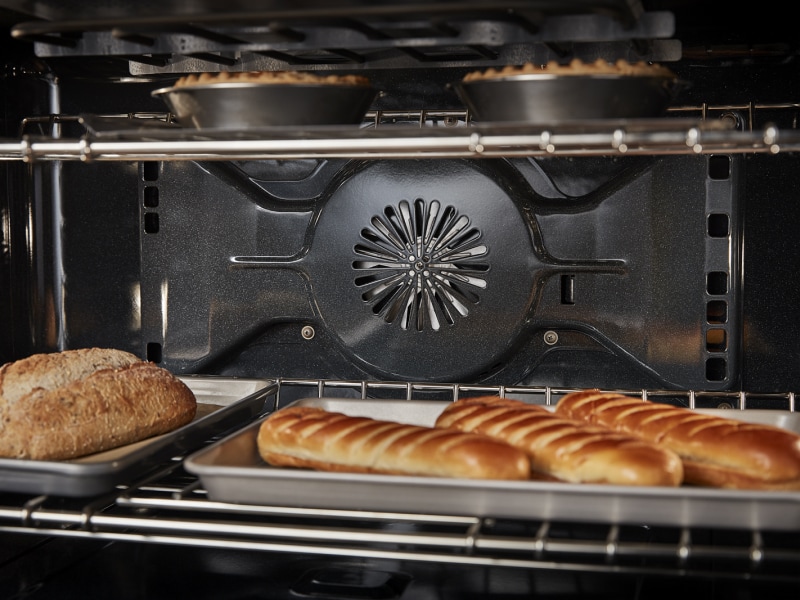
Convection Ovens
Convection ovens use an integrated fan to circulate hot air and decrease moisture. This feature helps to evenly spread heat within the oven, ensuring uniform results, particularly when cooking batches or using multiple racks. By reducing surface moisture, it aids in crisping and caramelizing foods and achieves baked goods with crisp exteriors and soft interiors. Convection baking also helps eliminate hot or cold spots, enabling food to cook more quickly and without the need to turn dishes around.
Some convection ovens feature a third element in the back of the oven cavity—in addition to the fan—known as true or European convection. Select KitchenAid ovens feature true convection, like the KitchenAid® 30" Double Wall Oven with Even-Heat True Convection. This technology ensures even heating and cooking in ovens featuring a unique bow-tie shaped design and a convection fan, which helps prevent burnt edges and undercooked centres.
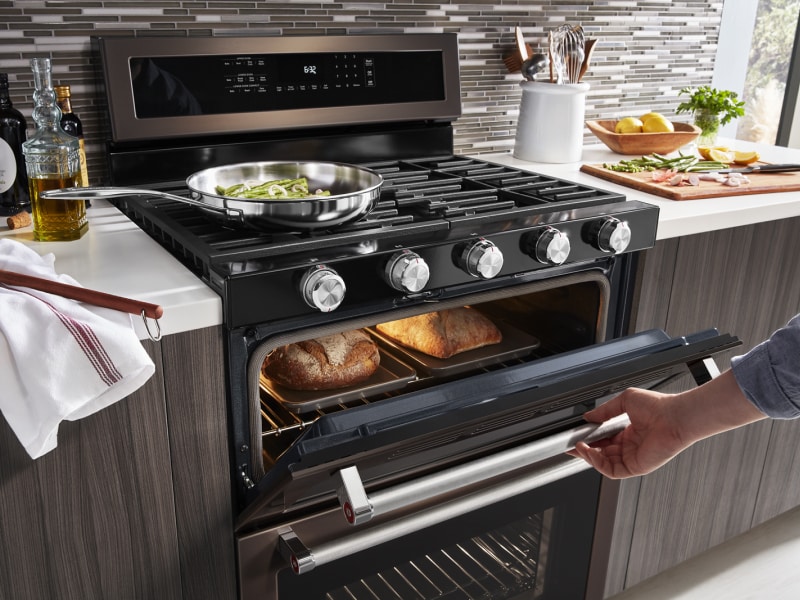
Gas Ovens
Gas stoves, ranges, and ovens use an open flame inside the oven and on the stovetop, allowing them to heat up rapidly. They generally produce heat with propane or natural gas, offering a highly responsive flame for precise control on the stovetop or cooktop. Gas cooking appliances need a dedicated gas line, which a professional can install easily if it's not already present.
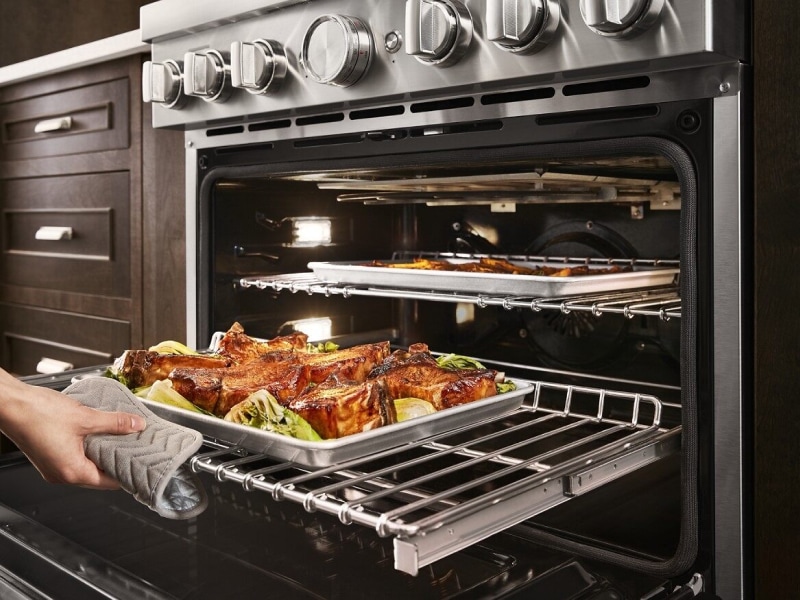
Electric Ovens
Many electric ranges, wall ovens, and countertop ovens are equipped with two heating elements: a bottom element primarily used for baking and a top broil element designed for searing meats, melting cheese, and toasting bread. Additionally, some stoves and ranges feature broilers located in a drawer or compartment below the electric oven.
Electric heat is a bit drier than gas heat, which is ideal for achieving crisp crusts on bread and for browning meats and vegetables effectively. Dual fuel ranges offer the advantages of both electric and gas cooking, combining them into one versatile appliance. KitchenAid® dual fuel ranges bring the precision of a gas cooktop together with the drier heat of an electric oven.
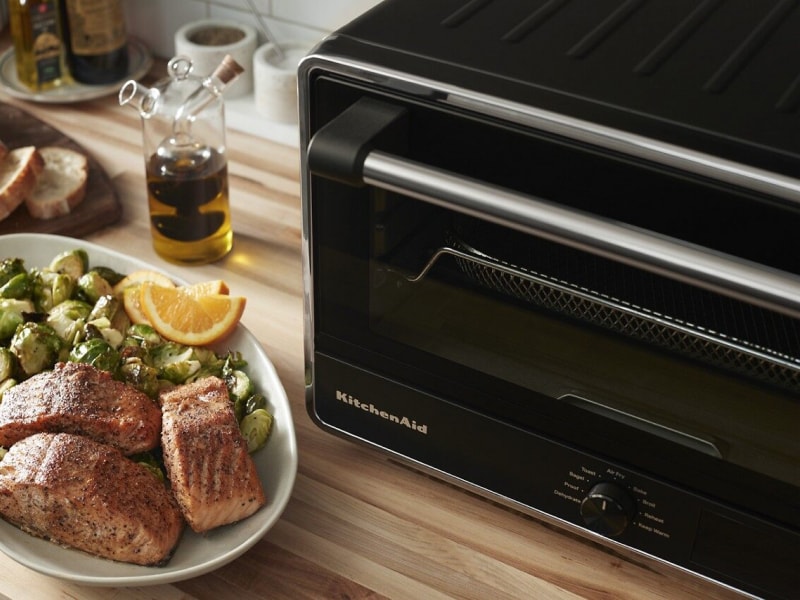
Air Fryer Ovens
An air fryer can be an independent countertop device or integrated into an oven, countertop oven, or range. It quickly produces crispy outcomes using minimal or no oil. Like a convection oven, it features a fan that rapidly circulates hot air around the food placed in a perforated tray or basket. This exposure to hot air on all sides cooks the food to a crispy finish, eliminating the need for deep frying in hot oil.
The KitchenAid® Digital Countertop Oven with Air Fry makes it easy to create everything from french fries to delicate fish and more. The No-Flip Air Fry Basket removes the need to turn ingredients over midway through cooking.
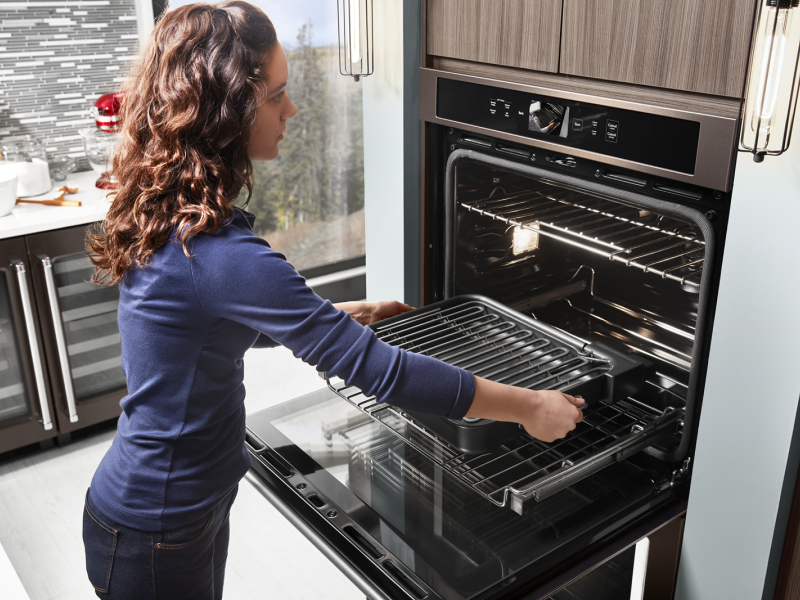
Steam Ovens
A steam oven operates by circulating steam rather than hot air around the oven cavity. It heats water from a reservoir, dispersing steam throughout the oven to cook food in a moist environment. Since water conducts heat more efficiently than air, steam ovens can cook food rapidly. This oven type is excellent for keeping vegetables, fish, meats, and even leftovers moist during cooking.
Steam ovens are great for retaining foods' moisture, but they won't brown and crisp foods. The KitchenAid® Smart Oven+ 30" Double Oven with Powered Attachments delivers the advantages of smart capabilities and hot air cooking along with the ability to cook with steam and more. The +Steamer Attachment precisely steams vegetables, main dishes, or a full meal for four, including salmon, potatoes, and asparagus. Additionally, it can be used with the Steam Assist mode to produce a humid cooking environment, perfect for specific baked items, breads, and roasts.
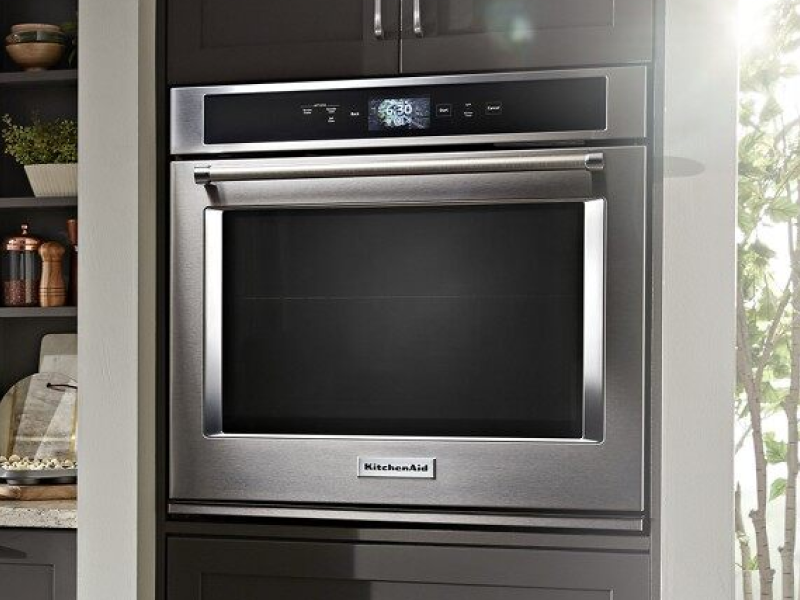
Self-Cleaning Ovens
Self-cleaning ovens facilitate deep cleaning by using extremely high heat to convert food residues into ash, eliminating the need for chemicals. The resulting ash is easily wiped away with a soft cloth. For less intensive cleaning, some ovens also offer a steam-clean feature, which uses water to soften tough soil particles, simplifying the cleaning process.
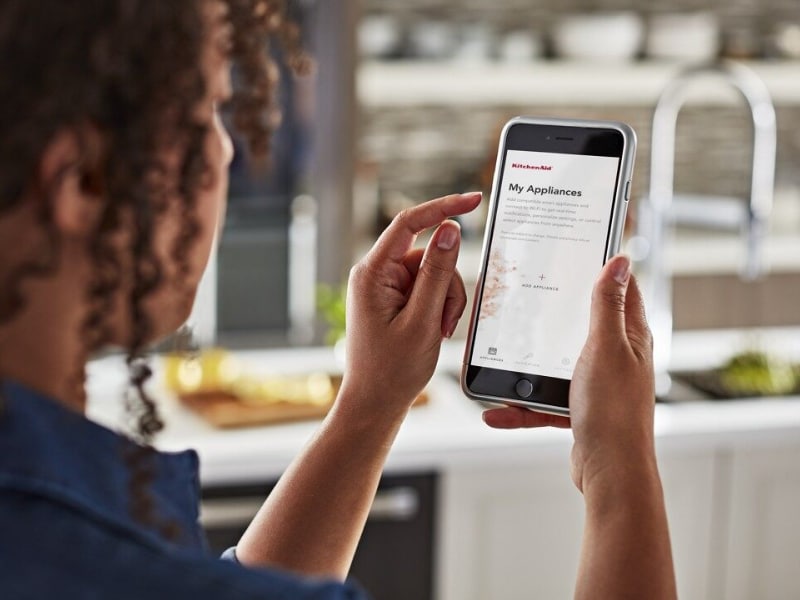
Smart Ovens
Smart ovens are multifunctional appliances equipped with digital features such as voice control, remote monitoring, and interchangeable attachments. They connect to the internet, allowing you to manage your oven via a smartphone app. This app not only facilitates remote control and monitoring but also offers guidance on cooking techniques and maintaining your oven.
To add to the versatility and flexibility of smart cooking, the KitchenAid® Smart Oven+ is always ready to create. You can remotely monitor and control your oven and attachments with the mobile app, and even use voice commands with an enabled device.
How Different Oven Settings Work
Cooks utilize various oven settings—such as bake, roast, and broil—to manage the temperature and functions of ovens and ranges. These settings are essential for creating diverse cooking environments suited to different recipes and dishes.
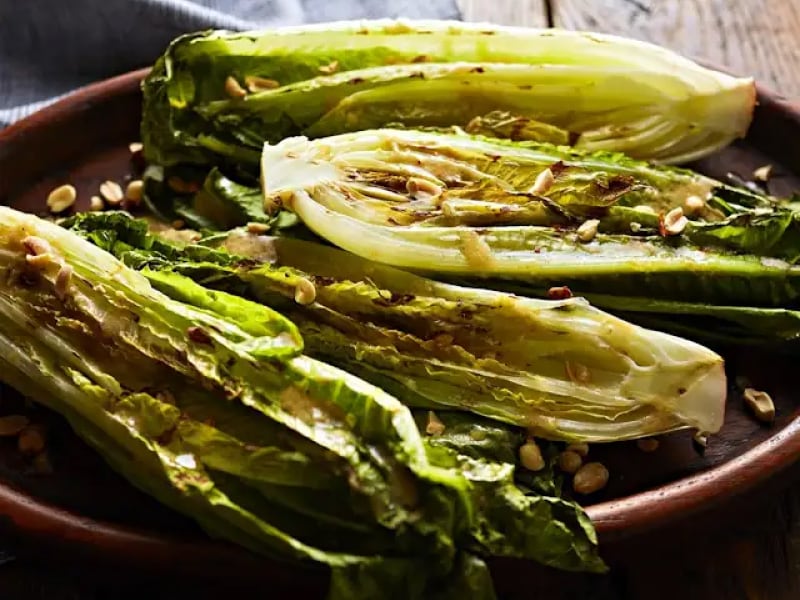
1. Grilling
Grilling inside an oven can mimic the flame-cooked taste of outdoor barbecuing without the need to go outside. Some ovens are equipped with a specific grill setting. Alternatively, you can use a grill pan or a broiler pan to grill meats, fish, and vegetables right in your oven.
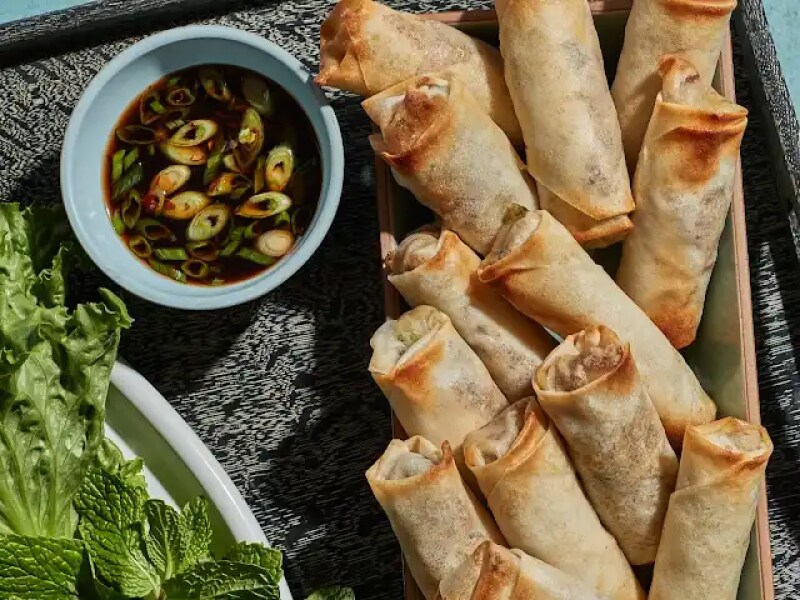
2. Air Frying
Besides standalone units, some ovens and countertop ovens feature an air fry setting that cooks foods typically deep-fried—such as chicken, onion rings, and doughnuts—with little to no oil.
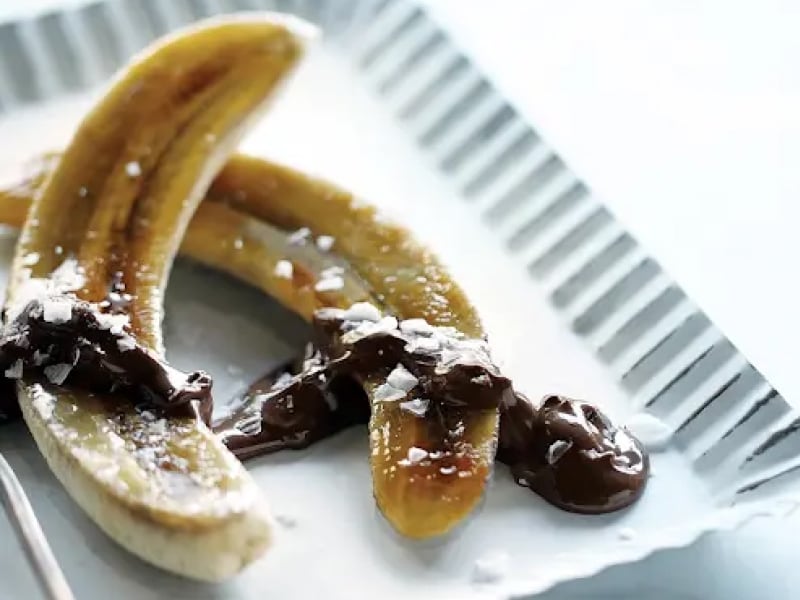
3. Broiling
KitchenAid Dual Convection Countertop Oven with Air Fry
Broiling uses direct heat from the top element to cook food quickly; the closer the food is to this top heating element, the faster it will char or sear.

4. BAKING
Baking uses dry heat at lower temperatures than broiling, roasting, and grilling to brown surfaces and solidify the interiors of unstructured foods like doughs, batters, and casseroles. The sweet, flakey dough for a Blueberry Lattice Pie baked in the oven before it's filled with whipped cream and berries for an impressive presentation.

5. ROASTING
Roasting employs dry heat at high temperatures to brown surfaces and enhance flavours in meats and vegetables.
EXPLORE KITCHENAID® OVENS & RANGES
Whether you need the installation flexibility of a single wall oven, the multitasking prowess of a double or combination wall oven, or the style and performance of a commercial-style range, you'll find the right appliance to explore new culinary possibilities with KitchenAid® ranges and KitchenAid® wall ovens.
DISCOVER MORE ABOUT OVENS FROM KITCHENAID BRAND
-
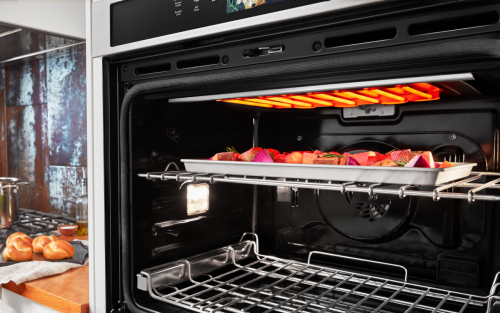 Guide to Air Frying in a Convection Oven Discover the benefits of air frying in a convection oven and how to get the most out of this method. Plus, learn convection oven air fryer recipes.
Guide to Air Frying in a Convection Oven Discover the benefits of air frying in a convection oven and how to get the most out of this method. Plus, learn convection oven air fryer recipes. -
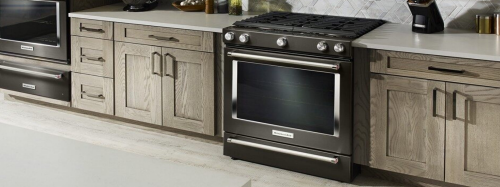 4 Simple Steps to Effectively Clean Your Self-Cleaning Oven Explore our guide to using your self-cleaning oven, including tips, FAQs, and step-by-step instructions.
4 Simple Steps to Effectively Clean Your Self-Cleaning Oven Explore our guide to using your self-cleaning oven, including tips, FAQs, and step-by-step instructions. -
 (GUIDE) Wall Oven Types, Sizes and Features Avoid buying the wrong size and type of wall oven for your kitchen. Use this guide to find out the best kind of wall oven for you.
(GUIDE) Wall Oven Types, Sizes and Features Avoid buying the wrong size and type of wall oven for your kitchen. Use this guide to find out the best kind of wall oven for you.

